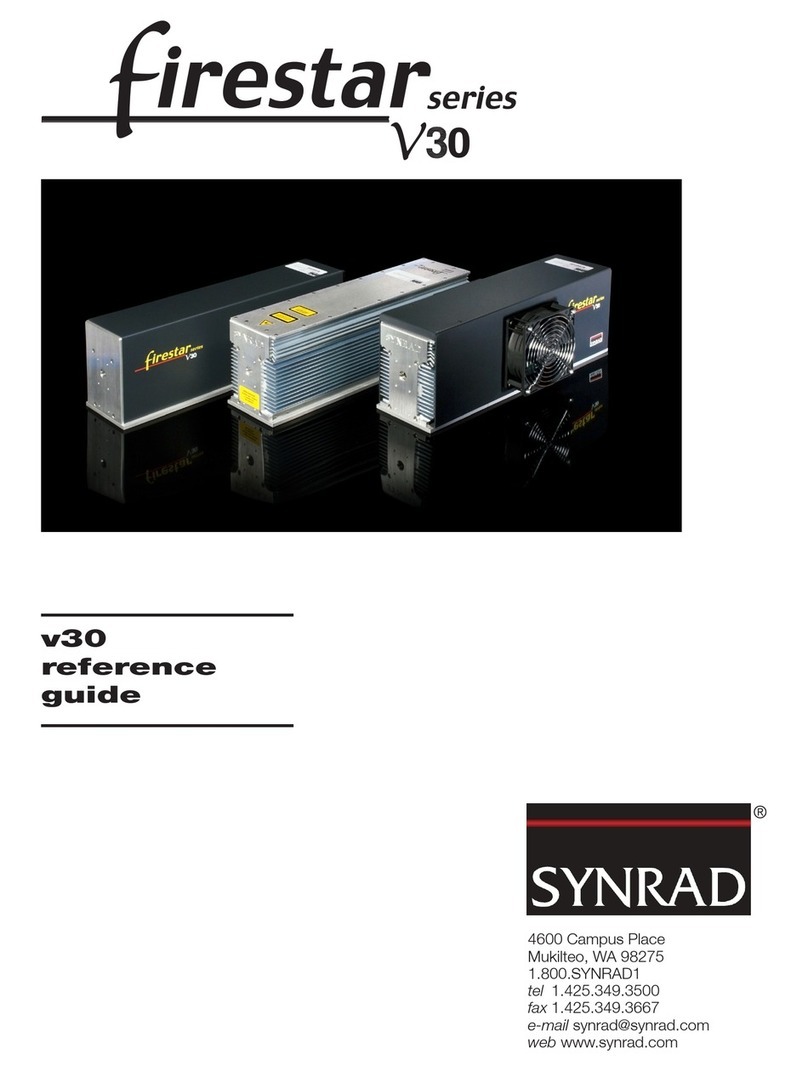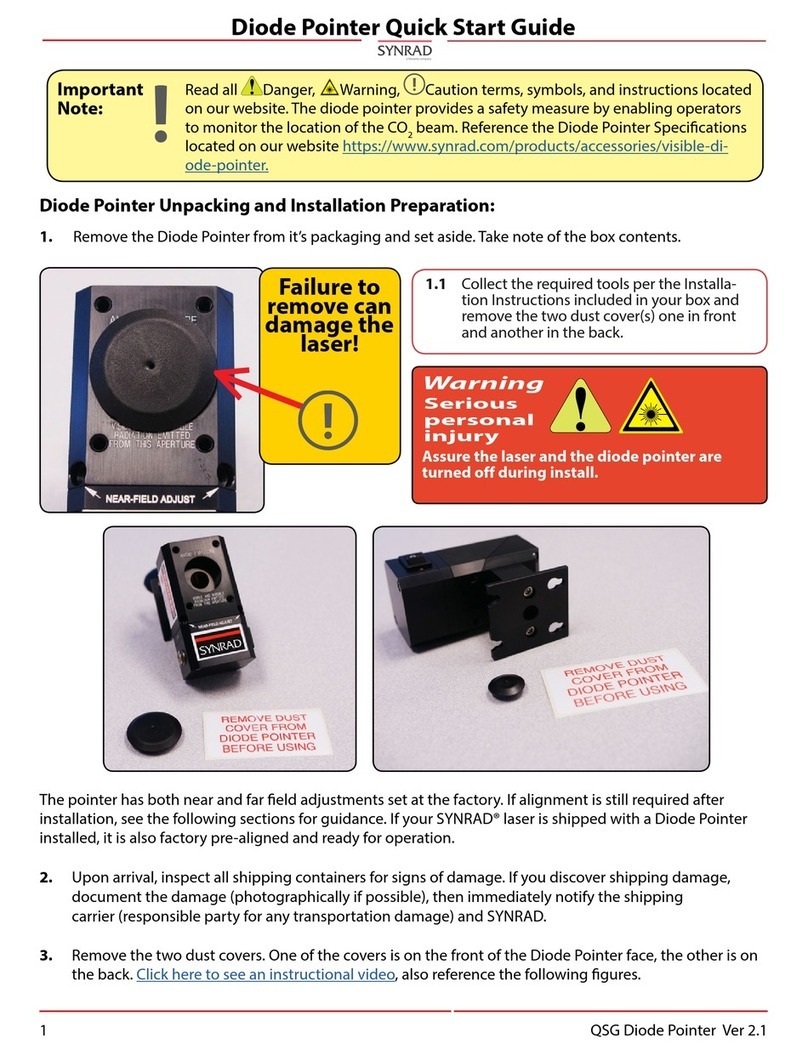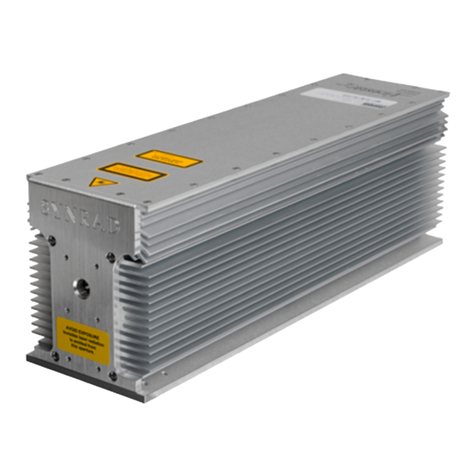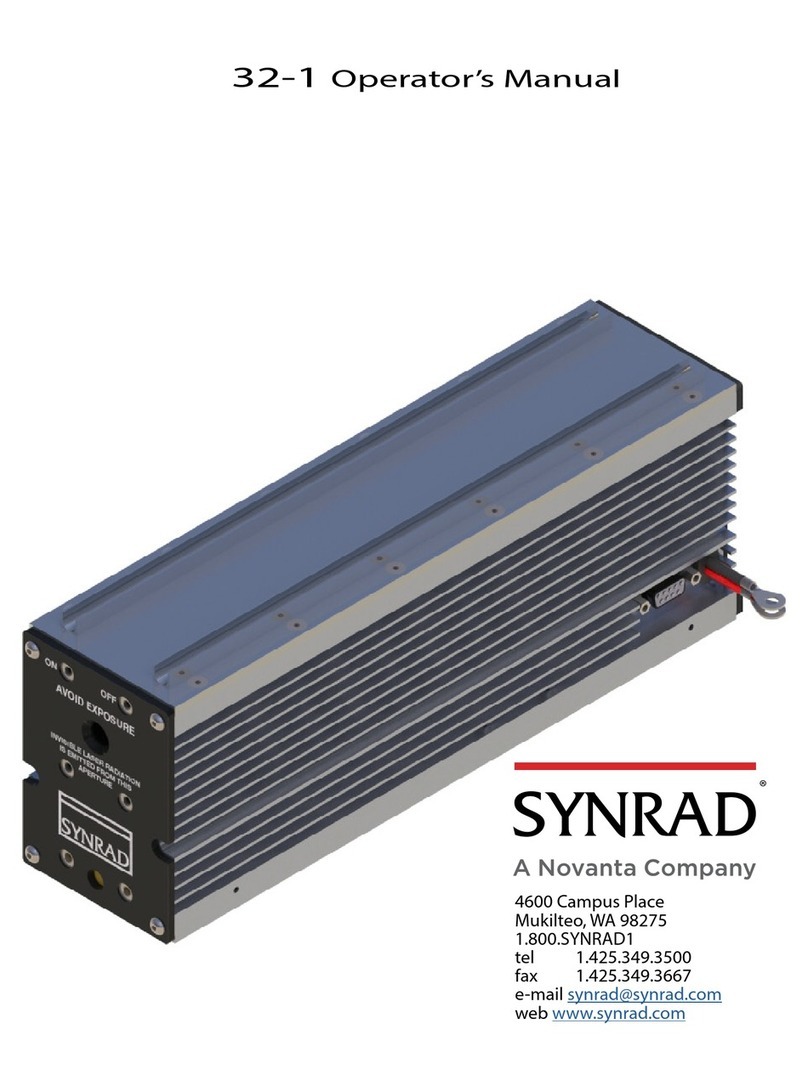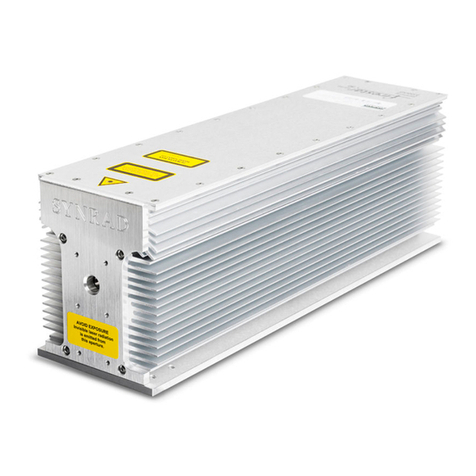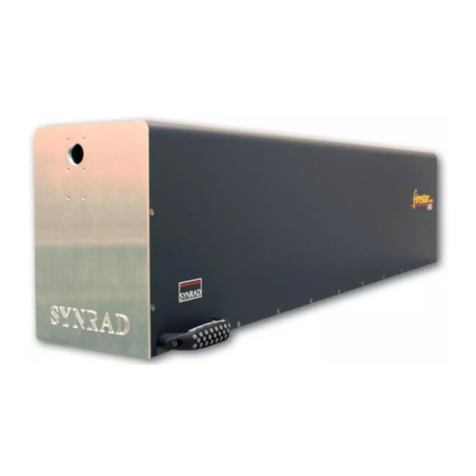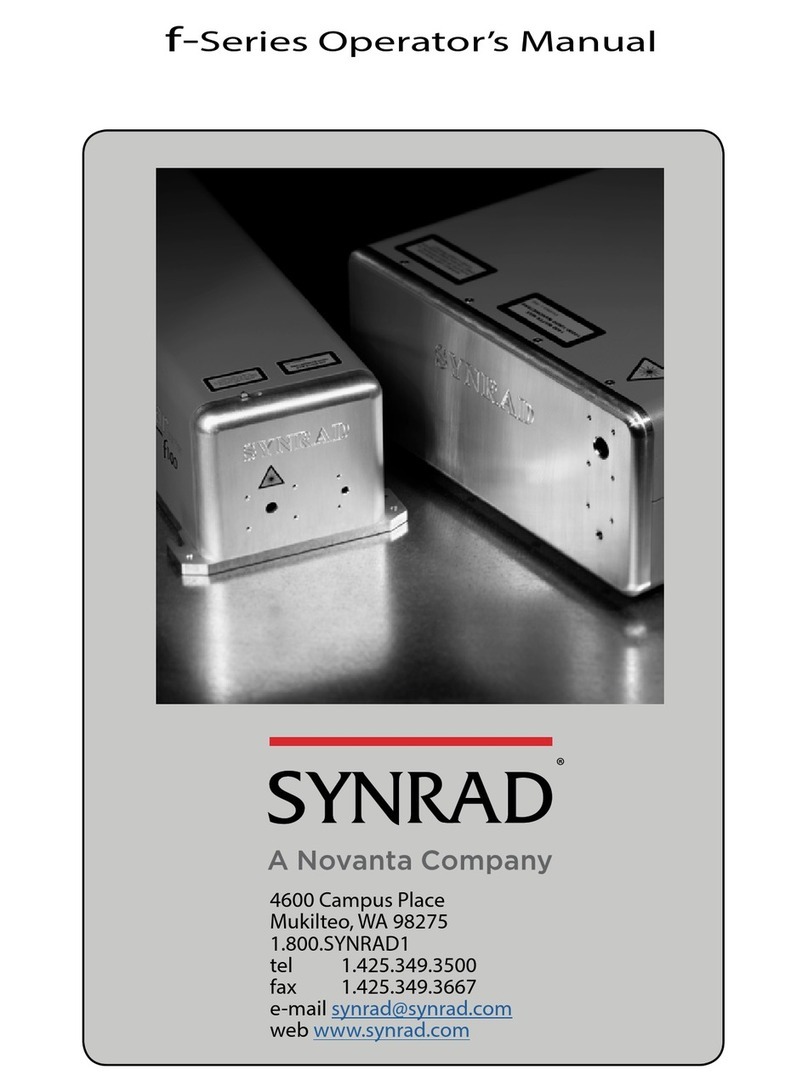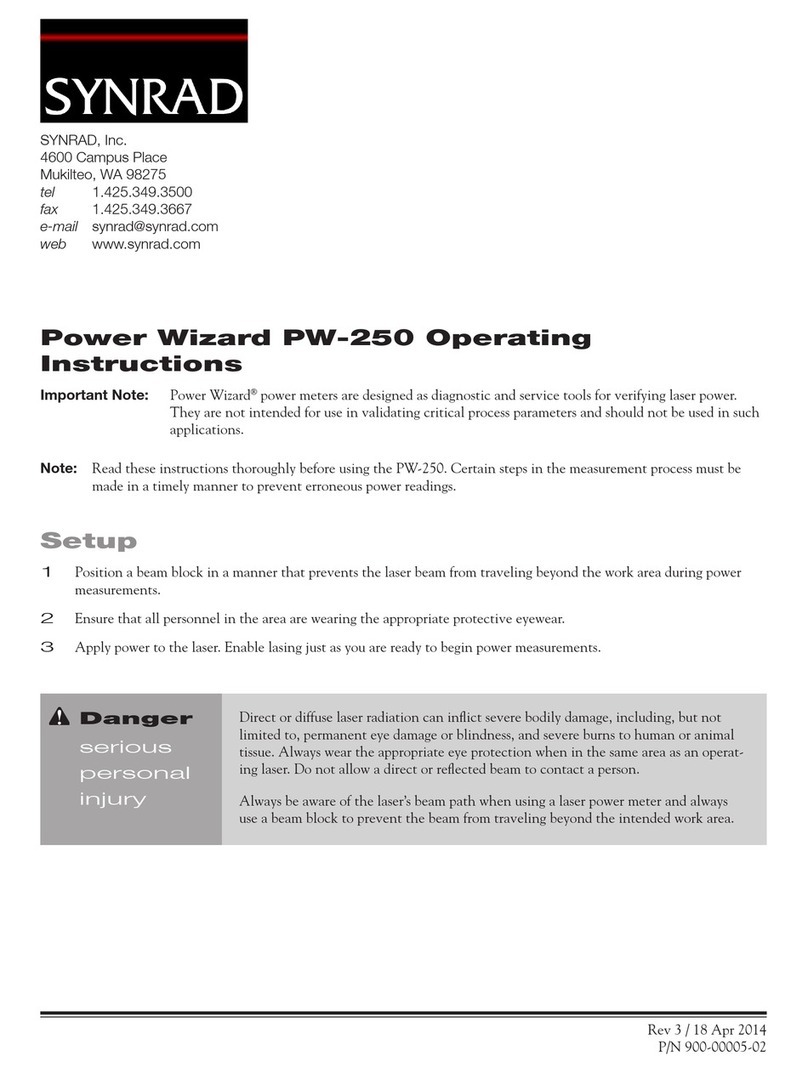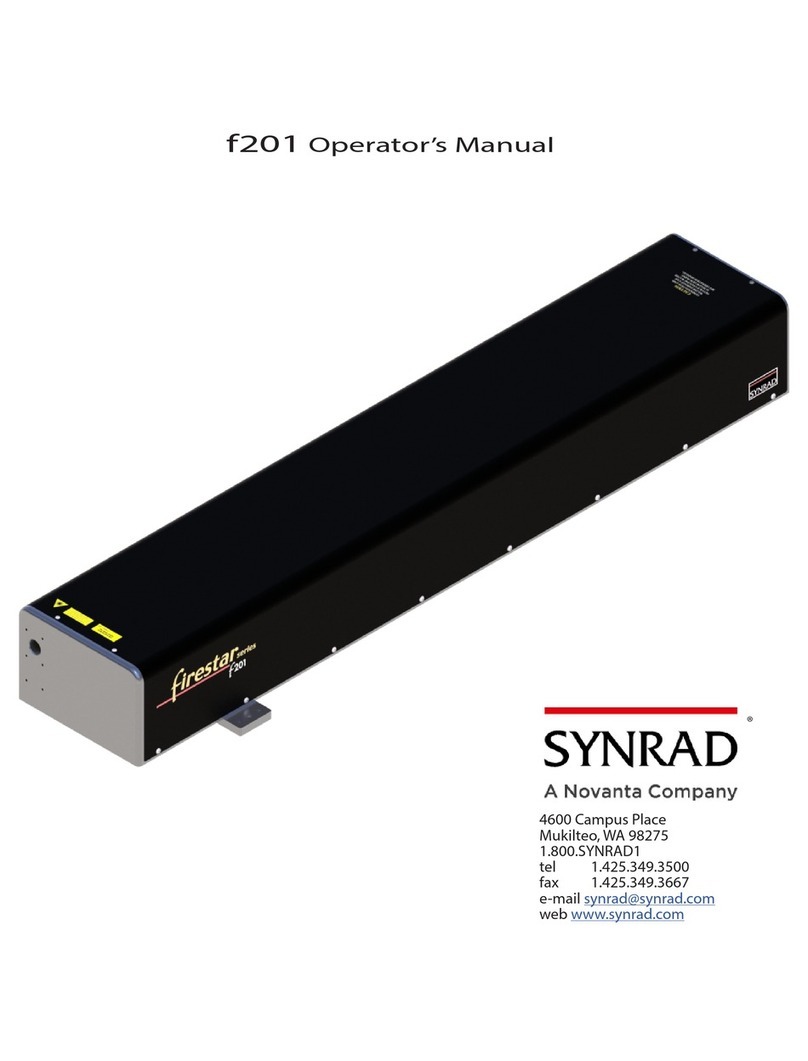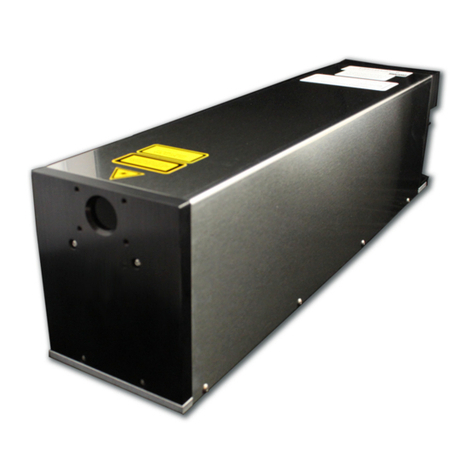
6 QSG ti-Series Laser Ver 2.5
ti-Series Laser Quick Start Guide
Guidelines for cutting and installing tubing
Cut tubing lengths generously to allow for trimming.
Cut tubing squarely, diagonal cuts may not seal properly. Trim away any burrs if the cut is “ragged”.
Avoid excessive stress on ttings by creating a gentle radius when bends in the tubing are close to
ttings. Bending tubing too sharply will compromise the sealing properties of the tting.
Never allow the tubing to kink, since kinking severely restricts coolant ow.
Push tubing completely into the tting, then pull the tubing to verify that it is locked into place.
Cooling ttings are designed to accept 12 mm polyethylene tubing.
If adaption is required, we recommend McMaster-Carr (P/N 51495K416).
Use distilled water as the coolant. If glycol is necessary, (temperatures below freez-
ing) add no more than 10% by volume. Use a corrosion inhibitor/algaecide such
as Optishield©. When filling your chiller, use at least 90% distilled or tap water by
volume. Biocides may contain chlorides that shall not exceed 25 PPM. See the tech-
nical reference chapter in the laser’s Operation Manual for the dew point table and
cooling specifications.
Overnighting cooling fittings may crack the cooling manifold, assure the max insertion depth is no more
than 6.6 mm (0.26 in) into the cooling manifold. Maintain coolant pH above 7. Operating the laser with a
coolant temperature below the dew point of the surrounding air may cause condensation to occur that
will damage the laser! The setpoint temperature MUST be maintained above the dew point temperature.
If tap water is utilized, chloride levels must be below 25 Parts Per Million (PPM). Water total hardness must
be below 100 PPM. If hardness is an issue, install a filter on the chiller’s return line and inspect regularly.
If tubing needs to be disconnected from a tting:
First push and hold the tubing slightly into the tting. Next push the white tting ring evenly to-
wards the tting, and then pull the tubing free.
After disconnecting tubing from a tting, trim 12.7 mm (0.5 in) from its end before reconnecting.
Trimming the end of the tubing before reconnecting provides an undisturbed sealing surface.
Push tubing completely into the tting. Test the tting by giving the newly installed tubing a slight
tug to verify that it is locked into place. Tubing extends into the tting approximately 22 mm
(0.875 in).
Note: Quick disconnect or compression type ttings can be utilized. These tubing adapters are avail-
able from many tubing and tting manufacturers. Do not use 1/2 inch size tubing of ttings
without appropriate adapters, doing so increases risk of coolant leaks.
Cooling Guidelines (Water Cooled Models Only):
Caution
Possible
Equipment
Damage
Daily inspections for signs of water damage due to condensation is highly recommended!


